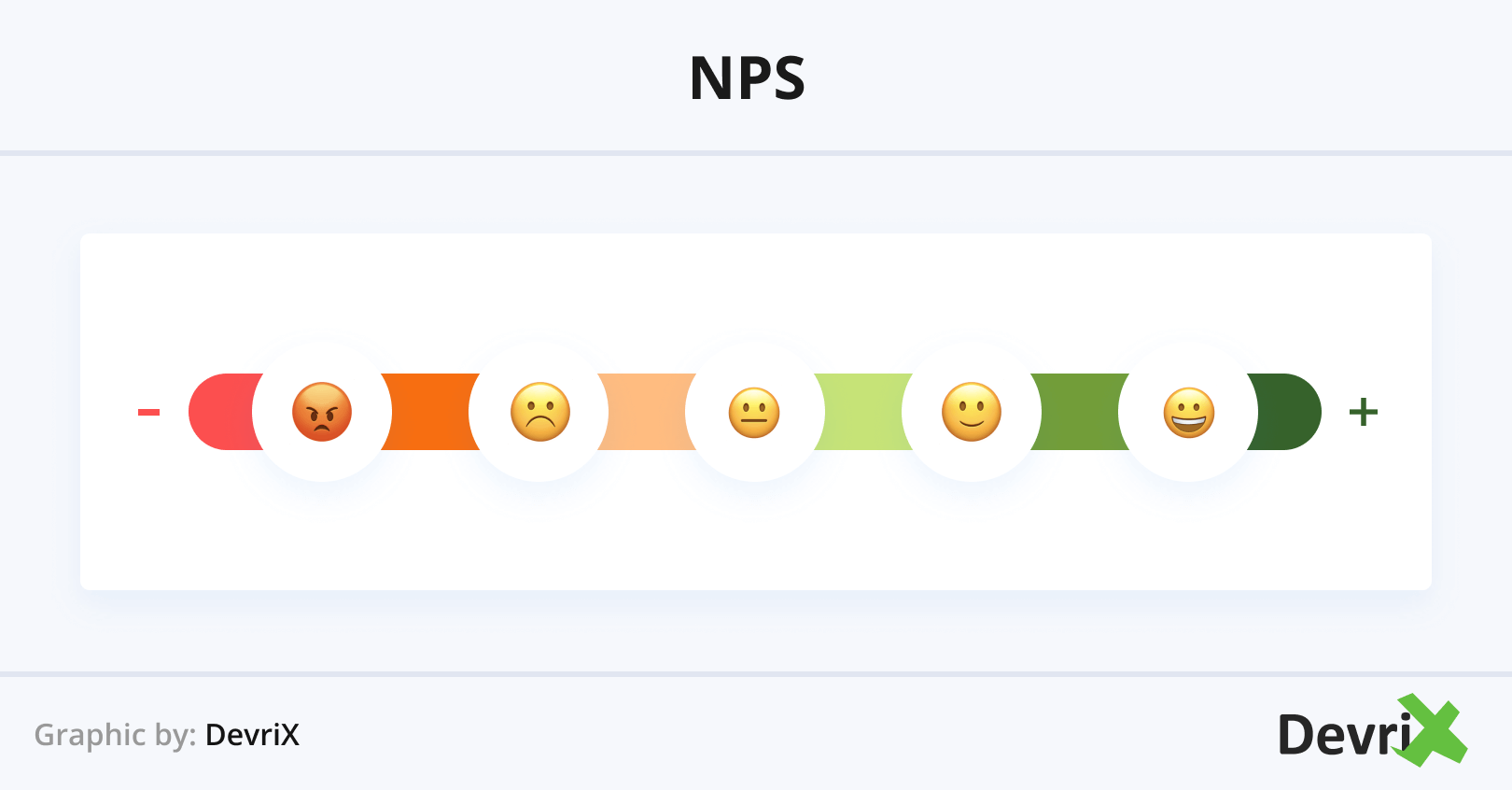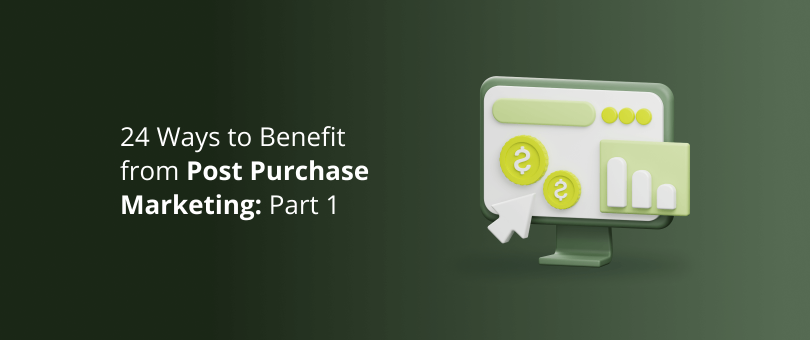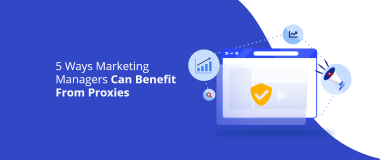The post purchase stage is probably the most important part of the buying experience. This is when things get real – the customer finds out whether the business keeps their promises, and if the products and services live up to expectations. It’s the moment of truth.
Furthermore, what happens after the customer hits the “buy” button defines their whole future relationship with the company – trust, loyalty, repeat purchases, positive word of mouth, customer advocacy, or disappointment, regret, negative reviews, and a switch to competitors.
However, navigating the post purchase stage can be challenging both to customers and brands.
In this article, we provide actionable tips on how to benefit from post purchase marketing in order to boost retention and customer service satisfaction.
Read on and take note!
Why You Should Care about the Post Purchase Stage?

While we all know that retention is more cost-effective than acquisition, post purchase marketing is, quite often, neglected. Once the deal is sealed, many businesses call it a day, and focus their attention on winning over the next customer and making the next sale. What they fail to account for is how the customer will react and feel after making the purchase.
There are, generally, two types of purchases – the planned ones for which the person has researched the item beforehand and makes an informed choice, and the impulsive buys in which the customer is caught up in the moment and acts on this emotion.
Although the two types are the products of different behaviors, they both can result in the so-called “post purchase dissonance”, especially when it comes to online shopping.
Post purchase dissonance is defined by buyer’s remorse, uncertainty, anxiety, and regrets, and makes the customer question whether they made the right choice.
In offline interactions, as the client obtains the product/service right away, they may experience cognitive dissonance shortly after, which is, more often than not, the result of their dissatisfaction with the product.
However, online, in most cases, the person has to wait to receive their order. The period between making the purchase and receiving the product is where the post purchase dissonance most often begins Regardless of whether the customer has researched the product well or they’ve decided to treat themselves out of the blue, while they are waiting for the delivery person to ring the bell, they experience a cocktail of emotions.
To make these the positive kind, as a brand, you need to be there for the customer to inspire confidence and reassure them that they’ve made the right decision. Otherwise, instead of being excited and happy about their decision, your customers may second guess themselves as well as feeling anxious and disappointed.
How to Benefit from the Post Purchase Stage
Utilizing the power of post purchasing requires a holistic approach, dedication, and attention to detail.
To help you out, we’ve highlighted six of its most important cornerstones and broke them down into 24 ways to benefit from post purchase marketing:
Gathering Feedback to Conduct Post Purchase Evaluation
To conduct post purchase evaluation means to observe, gather data, and analyze how people feel after making a purchase.
1. Distribute Surveys
The best way to understand how people feel during the post purchase process is to ask them, and the easiest way to do so is by distributing surveys. These can focus on the purchase experience, customer service, product, and anything else you want to know.
However, it’s important not to annoy them. Your goal is to provide a hassle-free opportunity so they can speak their minds and submit their feedback and suggestions.
Not everyone will fill out your surveys, but those who do are usually the ones you should pay attention to.
2. Track NPS Scores

Another quick and easy way to acquire feedback is via net promoter score (NPS) cards. These are simple to use and only take seconds of your customer’s time.
Although the NPS score doesn’t provide information about why people feel the way they do, it can show you an overall assessment of your product and services. You can dig deeper into negative responses by inviting the customer to contact you for assistance or fill out a survey.
3. Ask for Reviews
Reviews are reliable and valuable both for the business and its customers. They can tell you whether people are happy with the products/services which can then lead to future customers.
However, it’s important to know when and how to ask for a review. The timing depends mostly on the type of product and the business relationship.
For experiential products and services (such as events, beauty procedures, restaurant visits, etc.) you should invite people to write a review shortly after. On the other hand, for products with longer lifecycles (such as expensive apparel, software, appliances, etc.) the customer needs time to form an opinion.
In B2C, an email invitation for a review is usually enough. However, in B2B where the client-business relationships are usually more complex, you should consider raising the question during a feedback meeting or another personal interaction.
4. Cross-Reference the Feedback from Different Channels
Once you gather feedback from different sources and channels, make sure not only to analyze it, but to cross-reference it. The customer experience is complex and missing an important interaction or piece of information can cost you a paying client.
When analyzing feedback from customers, make sure to look for patterns and trends. These will show you what you are doing right and what you need to improve.
For example, if customers are often feeling disappointed with what they receive, maybe your marketing team is overselling the products and setting up unrealistic expectations. By adjusting your message, you’ll eliminate this issue and reduce customer attrition.
Track Post Purchase Behavior
Behavior analysis is a powerful instrument that can tell you a lot about how people feel about your company.
5. Keep Track of Cross-Channel Communication
Nowadays people interact with brands across multiple channels (such as email, social media platforms, chatbots, etc) and expect a consistent customer experience. To be able to deliver, you should not only be active on said channels, but you must speak in the same voice.
The best way to keep track of all your client touchpoints and the data associated is to use customer data platforms (CDP) and customer relationship management (CRM) tools. These tools process the information and present the results in an easy to understand format, so you can take data-based actions in a timely manner.
As a result, when a customer contacts you, you can provide a personalized post purchase experience based on past interactions.
6. Monitor Follow Up Website Visits

If a customer regularly visits their profile to monitor their order’s progress, this may be a sign that they are feeling anxious about their purchase, delivery is taking too long, or that there are other logistical problems.
Setting up alerts and looking into such behaviors will help you identify and fix issues before they escalate. Furthermore, it may give you ideas on what information to provide to customers at checkout and what messages to send afterwards to keep them informed.
7. Analyze Post Purchase Drip Campaign Engagement
Another way to assess post purchase behavior is to monitor whether customers engage with your promotional messages, what type of emails they open, and what type of content they prefer.
This will tell you what they care about, what to share, and how to encourage engagement.
By adjusting your drip campaign’s messages and timings accordingly, you can reduce the customer’s anxiety and walk them through the post purchase period.
8. Encourage UGC
User generated content (UGC) can speak volumes about the post purchase experience. This includes comments, reviews, social media posts, forum and community engagement, and so on. Customers use these mediums to express how they feel about brands and products, and their feedback can make others feel more confident about their purchasing decisions.
To make the most of UGC, you can encourage happy customers to share unboxing videos, post photos of their products, share positive experiences and tag the brand, etc.
This behavior not only helps create a feeling of community, but also stimulates positive word of mouth which can significantly help new customers overcome post purchase dissonance.
9. Offer Hassle-Free Returns and Refunds
The easiest way to reduce a customer’s anxiety about making a purchase is to provide hassle-free returns and refunds. This reassures people that if there is something that they don’t like about the product, they will receive their money back. It’s like a shopping safety net.
If the client feels that all you care about is making the sale and boosting your profits, they are less likely to be confident in their choice. A reasonable returns and refunds policy shows that you value a good experience above all.
10. Be Available for Communication
Nothing is more frustrating to a customer than not being able to contact the merchant in the post purchase phase. This creates feelings of doubt and anxiety, and may lead them to believe that you are a fraud.
If, for some reason, you are unable to reply in a timely manner, consider issuing a multi-channel message that informs the customers about the delays. You can also set up an auto-reply with relevant FAQ information that may help them find answers to their questions. And, above all, be sure to get back to everyone as soon as possible.
Communication is vital in the post purchase experience because it shows how reliable you are – and this can be the difference between making loyal clients and losing them.
11. Resolve Disputes Swiftly and Fairly
Even if you provide top-quality products and the best customer service, incidents are bound to happen – these may include shipments damaged in delivery, missing orders, faulty products, service outages, etc.
Whether it is your fault or not, you should resolve disputes swiftly and fairly. This means that at the end of the interaction the customer shouldn’t feel cheated and disappointed, but should be ready to recommend your brand despite the unpleasant experience.
However, to reduce the probability of such events happening, make sure to always deliver the best service you can, and work only with reliable partners that value quality as much as you do.
12. Always Answer Negative Feedback
Similarly to disputes, negative reviews and feedback are inevitable. However, what matters is how you handle them.
Make sure to always answer negative reviews, investigate the issues, and try to find working solutions that satisfy the customer as best as possible. This shows that you care about the quality of your products and services and are willing to deliver a satisfying customer experience no matter what.
Managing to do so will not only help you retain these customers, but may reduce the post purchase dissonance of newcomers who look into reviews to find confirmation of your credibility.
Coming Up Next
In part 2 of this article, we’ll be focusing on what types of emails to send to your customers in the post purchase stage, how to enhance the post purchase experience, and what type of personalized campaigns deliver the best results.

![[Infographic] 24 Fundamental Email Marketing Stats](https://devrix.com/wp-content/uploads/2018/01/Infographic-24-Fundamental-Email-Marketing-Stats-380x160.png)


